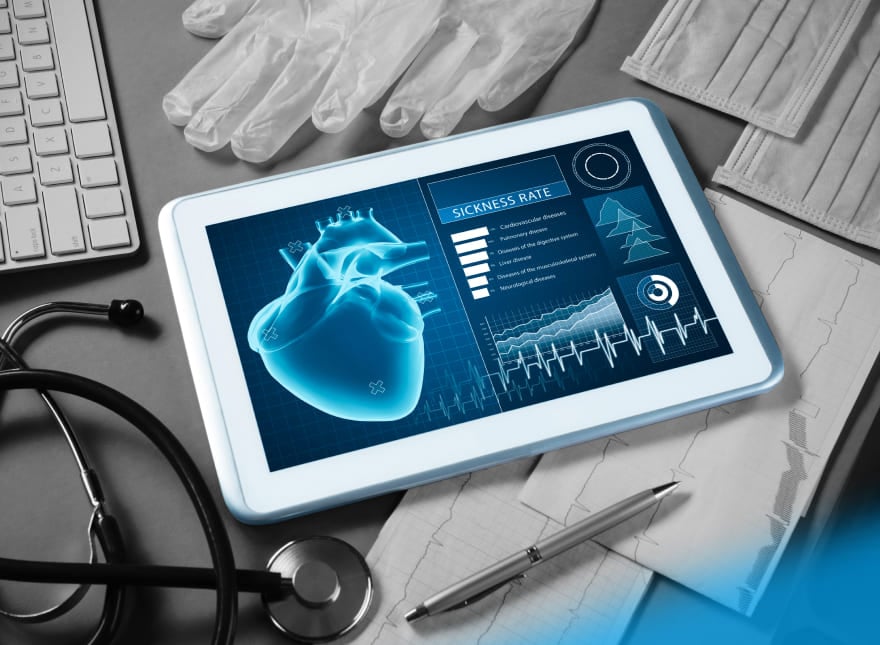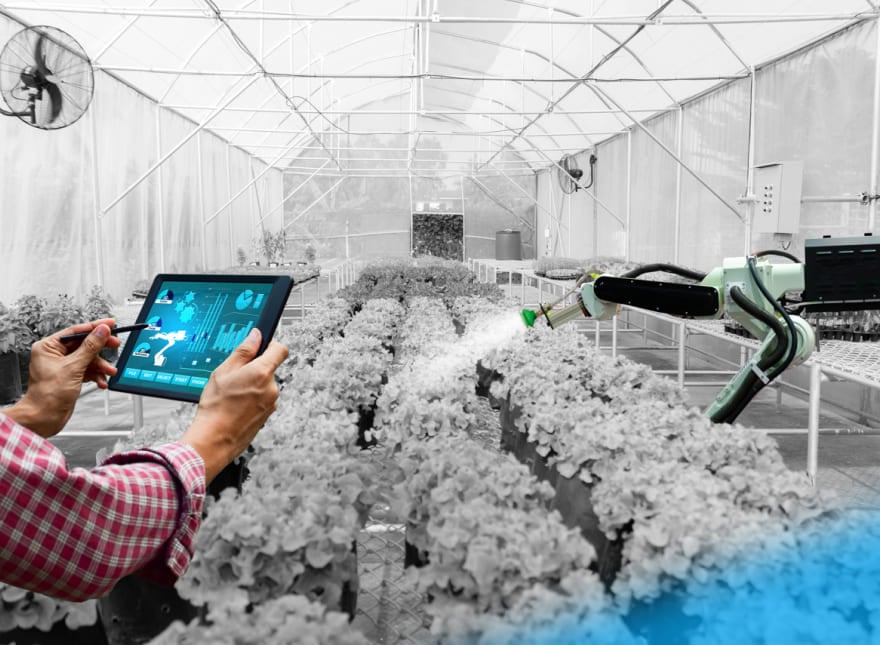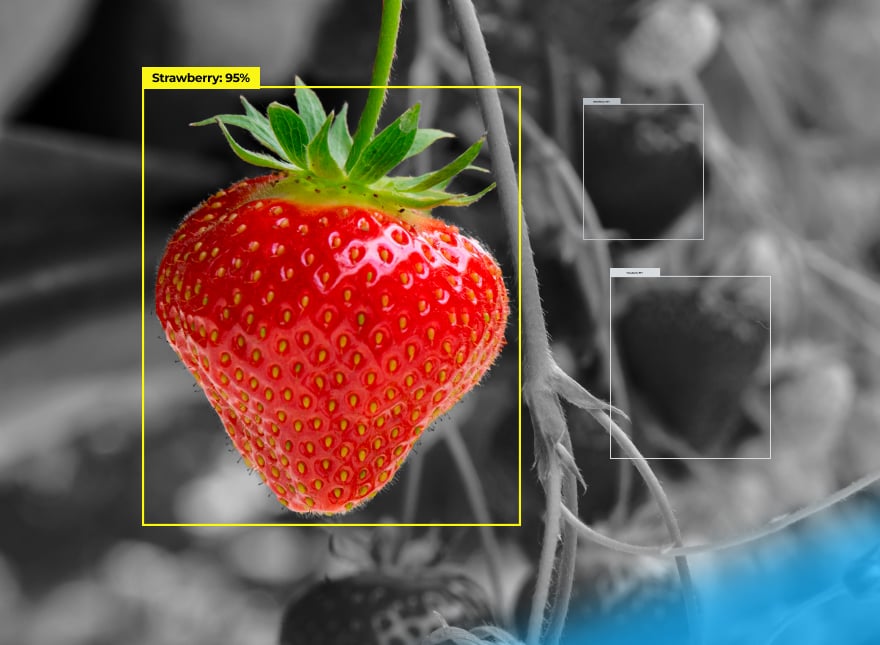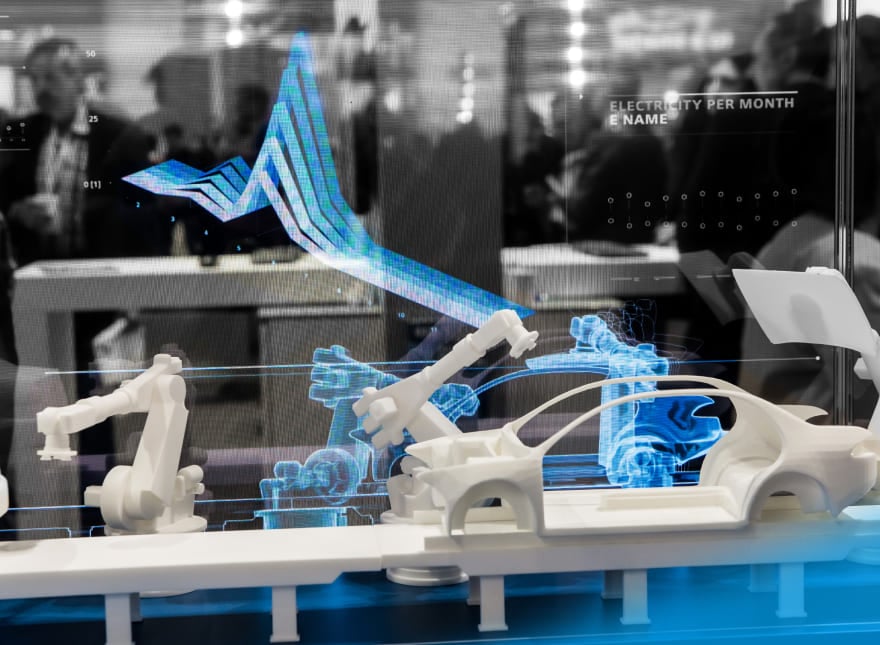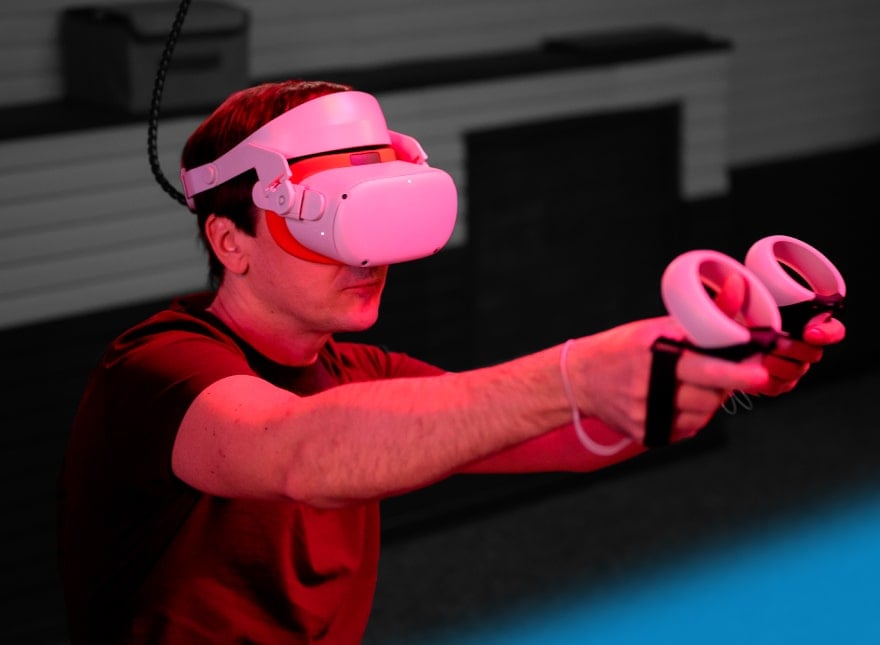Turning Data Into Business Value: How IoT Ecosystems Transform Transportation
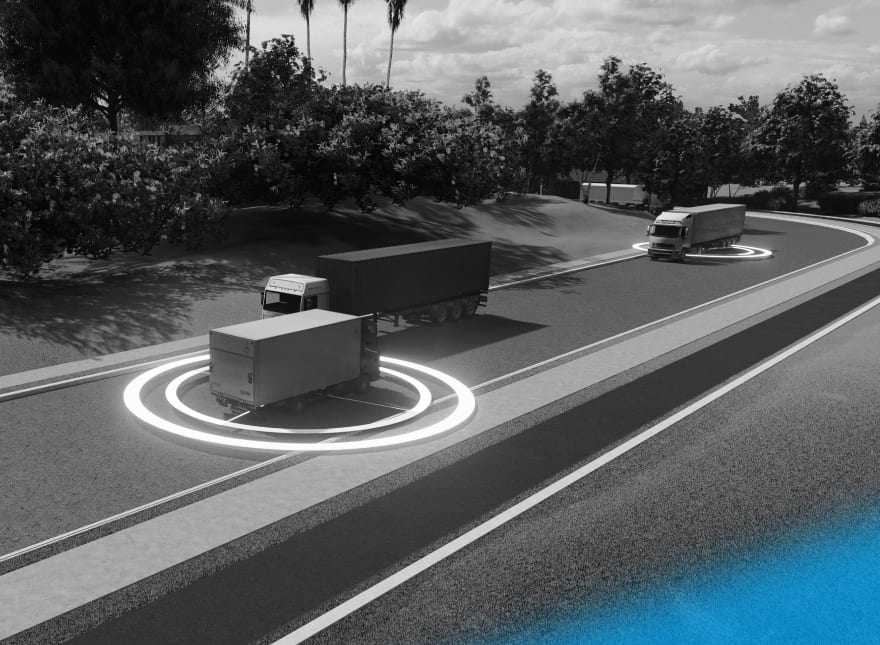
You’ve probably already stepped into the IoT world. Sensors attached to trucks let you watch the habits of drivers or track cargo against theft. So you know the perks that individual IoT solutions can add to the plate.
But to be able to develop your business based on data from sensors, you need a holistic IoT ecosystem. An IoT ecosystem typically comes with dozens of connected devices, cloud processing, and machine learning techniques—all you need to collect the necessary data and analyse it in real time for up-to-date insights and immediate actions. Our new article will show you how to go further and find more opportunities for your business.
Table of Contents
More Than a Few More Sensors
Let’s see how an individual IoT device works in transportation. As an example, a truck might be an individual IoT device: equipped with sensors and cameras, this vehicle can generate data about its location, engine status, and local environmental conditions. A cloud-based data system ingests and processes this information in real time. So the company owning this truck can control its safety or performance and optimize its work—all on the fly.
By having an ecosystem instead of a standalone internet of things solution, you connect multiple devices and so produce more data on vehicle health, cargo state, and driver behavior.
Your data systems, plus artificial intelligence in the pipeline, process this data and bring insights for taking real-time actions regarding an individual truck or the whole fleet. You can optimize routes, react immediately to incidents, and schedule repairs in advance.
And this is how you get a holistic picture around the fleet (at any moment of time) and all related processes.
Such systems may also communicate with outside solutions like parking facilities or toll and ticketing tools and use their data. As a result, you control the entire supply chain—from the warehouse to customers.
What’s more, the IoT ecosystem helps you make more efficient supply chain decisions that drive business value. Automation and analytical capabilities are key players here. ML techniques, in particular, help analyze generated data and make accurate predictions on shipment delays, cargo problems, or even road accidents. As a result, you can easily find ways to improve logistics.
Key Elements of an IoT Ecosystem
On the tech side, a typical IoT ecosystem is a set of components, namely:
- Sensors (lidars, radars, cameras, ultrasonics)
- Device connectivity (the ability to connect to the network in order to transfer data to the cloud and receive commands)
- Network (Wi-Fi, Bluetooth, cellular)
- Application running on the processor in a smart device
- Interface-rich application for taking actions
- Cloud storage and processing
- Data analytics tools (computer vision, AI techniques)
You may also want to add some automation and robotics. Automation, such as smart platooning, and robotics help integrate disparate systems and thus get you a leg up on the competition. Robots, for instance, are used in distribution centers, where they pick, sort, load, and unload products. Here's why their adoption is growing.
Not Just Moving Freight
There are three pillars of winning IoT ecosystems in the transportation industry—data generation, data storage and processing, and AI-powered data analysis. When combined, these capabilities help you monitor driver behavior and environmental conditions, as well as track vehicle data and the state of cargo.
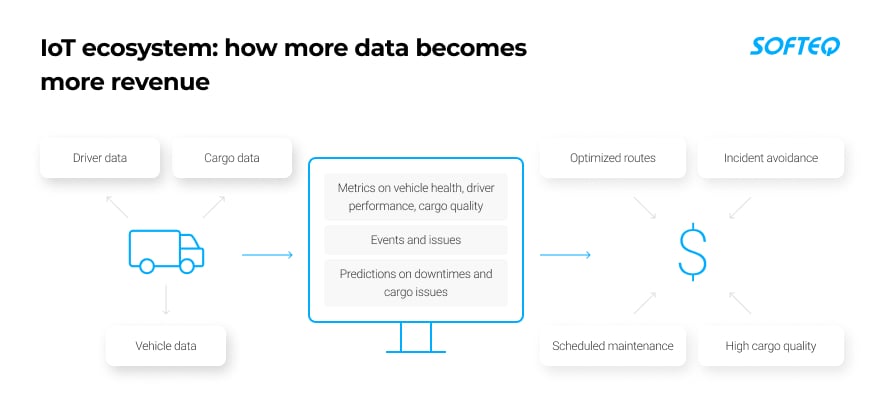
Potential IoT Applications in Transportation
The tech capabilities of IoT in transportation can be applied in a variety of different ways.
Fleet Management
To make the most out of each truck, it’s crucial to watch its parameters. These include fuel consumption, idle time, and health metrics like humidity and temperature. The latter of these metrics may help you avoid a truck breaking down in the middle of a route, costing money and time.
Within the IoT ecosystem, it’s possible to integrate GPS-tracking and telematics, diagnostic features, fuel management, and route optimization into one management automation tool. This allows you to track and react or, vice versa, to act proactively. IoT applications in transportation let you optimize fuel consumption, schedule maintenance services, and immediately respond to incidents. This also saves time on manual reporting.

Remote Traffic Management
IoT works excellently for tracking routes and managing traffic.
In particular, when trucks are connected, smart long-distance platooning is a real possibility. This refers to the ability of vehicles to drive close to each other and, by doing so, reduce fuel consumption and improve safety. Such a convoy can speed up and brake simultaneously. What’s more, if one driver falls asleep, their truck can automatically follow the platoon leader. In addition, managers can assist drivers and define the right conditions for fleet platooning. The list of benefits is vast—from saving money on fuel to avoiding losses caused by accidents.
OEMs, like Volvo, MAN, Daimler, and Scania, have deployed prototypes of automated following systems. On the tech side, this high-density platooning with a larger number of trucks is possible due to 5G. Although several US states including Oregon and Texas have legislation that would apply to truck platoons, not many have laws that allow automated following.
Cargo Management
With IoT in transportation, it’s possible to track the quality of your cargo while transporting.
Typically, sensors measure the cargo’s temperature, humidity, and light. But sensors also come in handy when you need to follow specific regulations—for example, stringent food safety requirements, or relevant requirements for transporting sensitive pharmaceuticals.
With IoT on board, you can track the condition of cargo and prevent spoiling or damage. As a result, you avoid money losses.
Predictive Maintenance Solutions
Predictive analytics helps truck drivers avoid vehicles suddenly breaking down on the road and helps managers reduce delays with freight delivery.
The system can collect and analyze road conditions and mileage, send alerts about abnormalities, and schedule maintenance services. AI capabilities help predict when a certain part needs repair or replacement. This prevents your business from downtimes and costly repairs.
Security Concerns
However, more data and smarter trucks may become a security risk. So, when creating your IoT ecosystem, ensure a secure environment to protect against data loss and cyberattacks.
A potential threat can come from anywhere in the IoT world. DoS attacks make vehicle software unavailable. Hackers can intercept network communications between the cloud and the truck (MitM attacks). That’s why it’s important to protect the servers, the networks, and the applications. Get a glimpse at the key threat areas of connected cars as an example.
To understand your options, discuss an optimal cybersecurity strategy for trucks with your tech vendor. Focus on the following aspects:
- Developing in line with security-by-design approach from the ground
- Identifying vulnerable areas from a customer, company, and regulator perspective
- Creating a cybersecurity plan of actions with a detailed roadmap
Don’t forget to prioritize security standards and requirements. Compliance is literally your entrance ticket to the market. For the transportation industry, it may include developing in line with SAE J3061, the Cybersecurity Guide for CyberPhysical Vehicle Systems.
Bottom Line
With the IoT ecosystem, you get a huge potential to add mobility, automation, and data analytics to your business. The main advantage is the visibility of the delivery process, shipping routes, and driving behavior—all resulting in more efficient supply chain management and optimized costs. The next step is to find the right tech vendor to bring IoT on board, and Softeq can be your company of choice.
More articles on the topic
